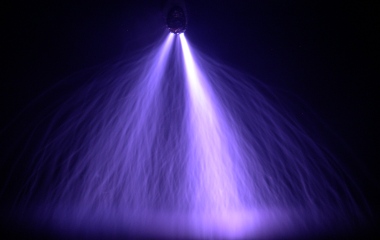
Recovery and resilience plan.


Plasmas are quasi-neutral ionized gases that are routinely used e.g. in arc welding and semiconductor industry. Non-thermal (non-equilibrium, cold) plasmas can be maintained at low gas temperatures, even at room temperature, but have high electron energies responsible for their chemical activity. They are typically generated by various electrical discharges (corona, spark, glow, barrier, radiofrequency and microwave discharges), at low as well as atmospheric pressures. Non-thermal air plasmas at atmospheric pressure are today of greatest interest in a wide range of environmental, bio-medical and industrial applications because they do not require costly vacuum equipment or rare gases.
Various types of atmospheric pressure cold plasmas provide many uses in: abatement of atmospheric pollutants from air and car exhaust (nitrogen and sulfur oxides, volatile organic compounds), ozone generation, water purification, bio-chemical decontamination and sterilization, surface treatment of materials, aerodynamic flow control, plasma-assisted combustion, electromagnetic wave shielding, etc. Most of these applications are based on the plasma-chemical effects, where generated electrons, ions, excited species and radicals initiate processes that occur neither in classical chemistry, nor in thermal plasmas. Non-thermal plasmas, in comparison with conventional techniques, often provide better results from the point of view of efficiency and energy costs.
In environmental applications, streamer and pulsed coronas, and various types of dielectric barrier discharges are mostly used. However, special types of transition discharges generating non-thermal plasmas, such as transition regimes of sparks, gliding arcs, high pressure glow discharges, and micro-hollow cathode discharges are being studied as well. These discharge types show high efficiencies especially for the destruction of hydrocarbon-based pollutants.
Desirable conditions of atmospheric pressure non-equilibrium air plasmas depend on the application. Usually, relatively low gas temperatures (below 2000 K) and high electron densities (above 1012 cm-3) are required. For bio-decontamination and other bio-medical applications, gas temperatures should be near ambient and the plasma should generate a lot of radicals and active species. To enhance the production of active radicals (such as OH) promoting bio-decontamination or flue gas cleaning processes, the presence of water in the plasma is usually desirable. Discharges of this type have a potential for simultaneous cleaning of air and water, as well as for the sterilization of microorganisms. In our research, besides studying discharges with metal electrodes, we also study various regimes of DC discharges in atmospheric pressure air with water by electrical and spectroscopic measurements.